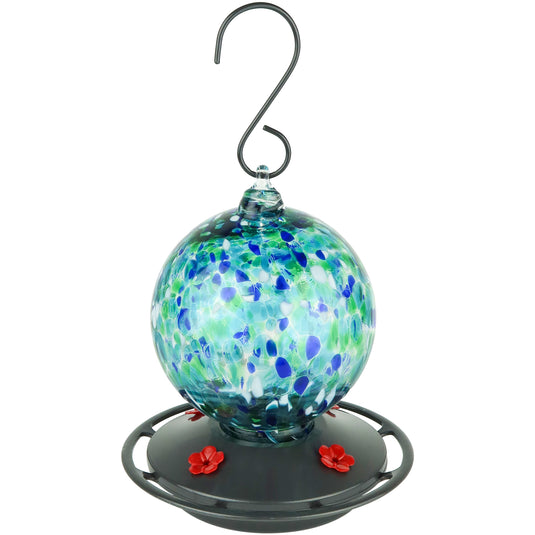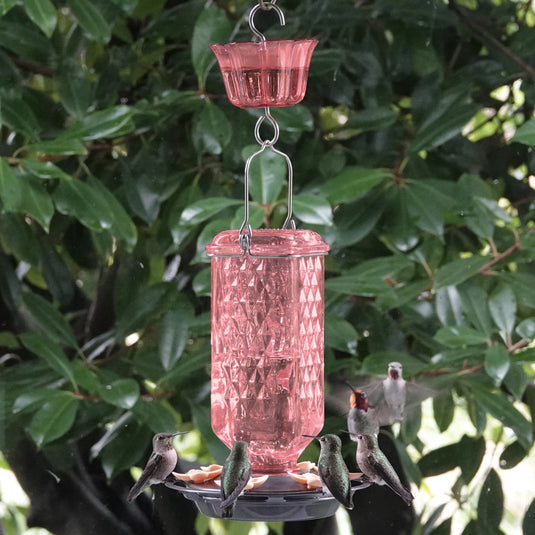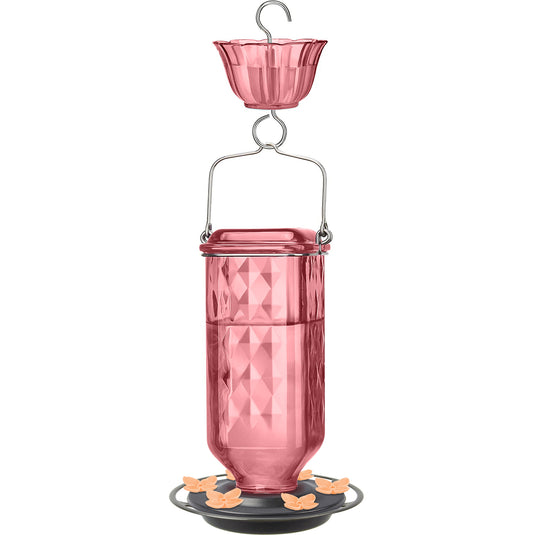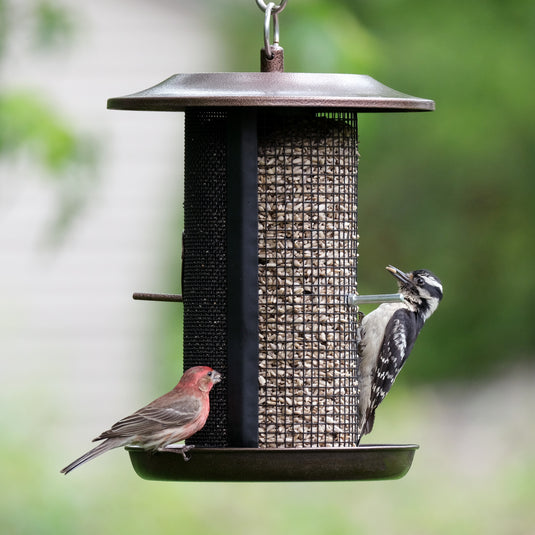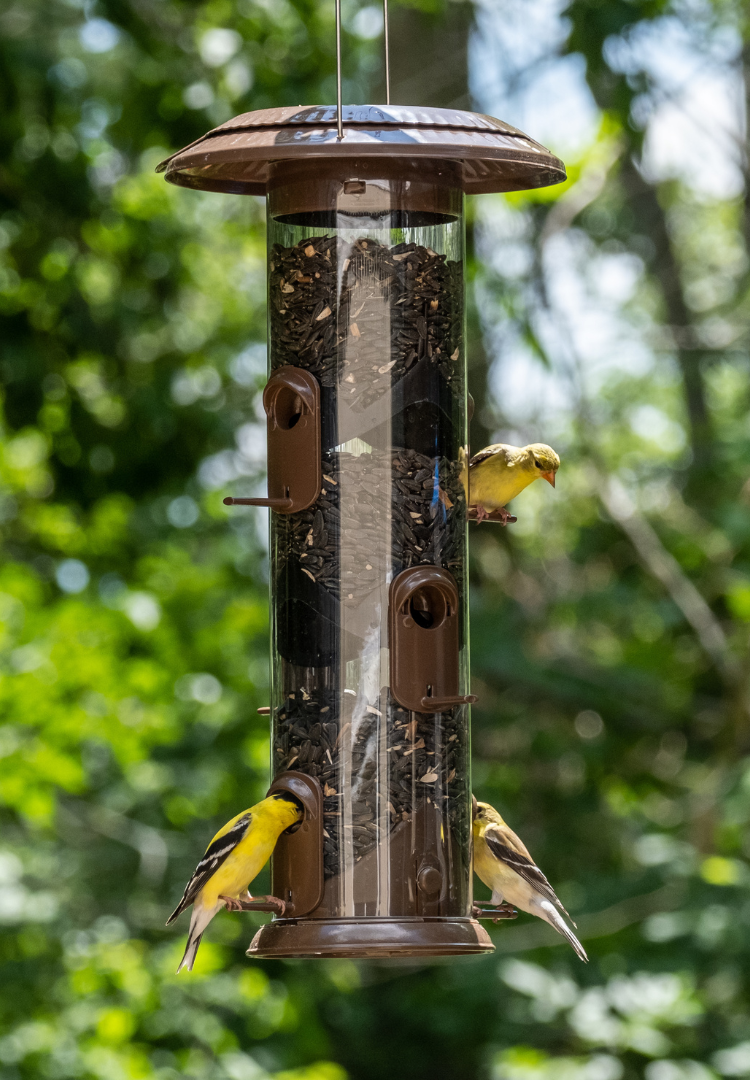
Identifying White-breasted Nuthatches:
The largest of the nuthatches, the White-breasted nuthatch is still a small bird averaging 5" to 5.5" in length with a wingspan ranging from 8"-10.5". With gray-blue coloring on the back, a white face, and white underparts this bird features a very short tail. Typical of most nuthatches, the White-breasted nuthatch has a large head and almost no neck. Its long, narrow bill is straight or sometimes slightly upturned. Males feature a black cap that runs from the beak down the back of the neck (on females this cap is dark gray). Most commonly found in woods and woodland edges of deciduous forests, these agile birds can often be seen creeping along tree trunks and large branches, often turned sideways and upside-down on vertical surfaces as they forage.
Attracting White-breasted Nuthatches to Your Feeder:
Above right: White-breasted nuthatch on Wide Deluxe Funnel Flip-Top Tube Feeder (Model# WMFFB-19) / Above left: American Goldfinch
Below: White-breasted nuthatch on Hanging Platform Feeder (Model# CWF3)
White-breasted nuthatches eat mainly insects. The types of insects they consume is wide-ranging and includes wood-boring beetle larvae, weevil larvae, scale insects, ants, gall fly larvae, caterpillars, stinkbugs, click beetles, and a host of other insect pests. While it may be hard, refrain from spraying pesticides in and around your yard as it removes these birds' natural food source.
These nuthatches will also eat seeds and nuts like acorns, hawthorn, and sunflower seeds. We recommend filling feeders like tube feeders or hopper feeders with black-oil sunflower to attract these birds. Nuthatches are also big fans of many types of suet and peanuts and are able to cling sideways and upside-down on suet cages and mesh, making upside-down suet feeders or mesh peanut feeders an ideal option for these birds.
Nesting:
Typically built in natural tree cavities or abandoned woodpecker holes, white-breasted nuthatches will sometimes enlarge these holes but will very rarely excavate them entirely. Females construct the nest on their own. After lining the nest cavity is with fur, bark, and lumps of dirt, she will then build a nest cup of fine grass, feathers, shredded bark, and other various soft materials. White-breasted nuthatches will often reuse their nest holes in following years, and they will sometimes use man-made nest boxes.
Clutches consist of 5-9 creamy white eggs speckled with reddish brown that are roughly 0.6" wide and 0.8" long. Eggs hatch after a two week incubation period and will fledge after 26 days. White-breasted nuthatches typically have 1 brood a year.
Leave a comment to share with us your White-breasted nuthatch stories!









